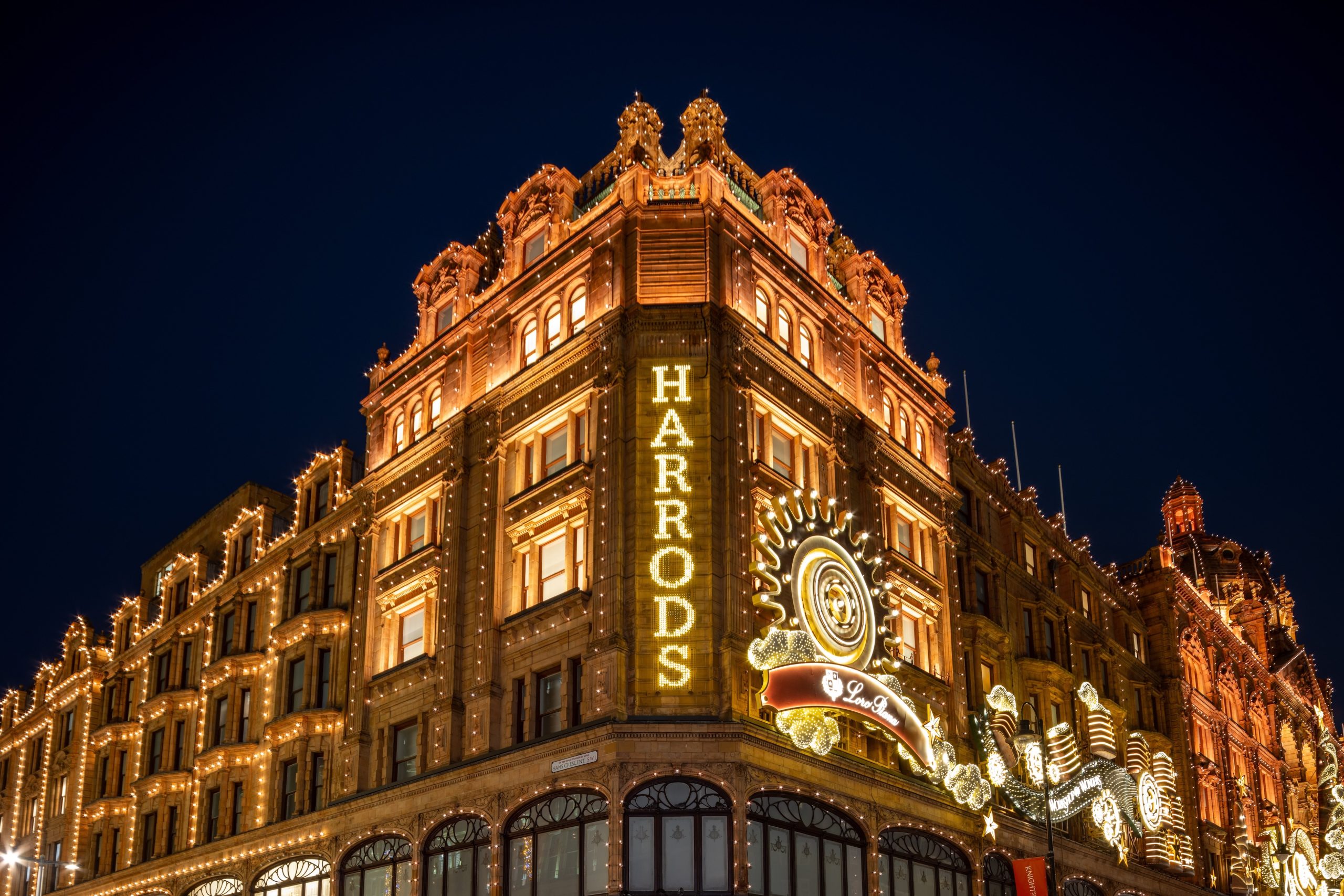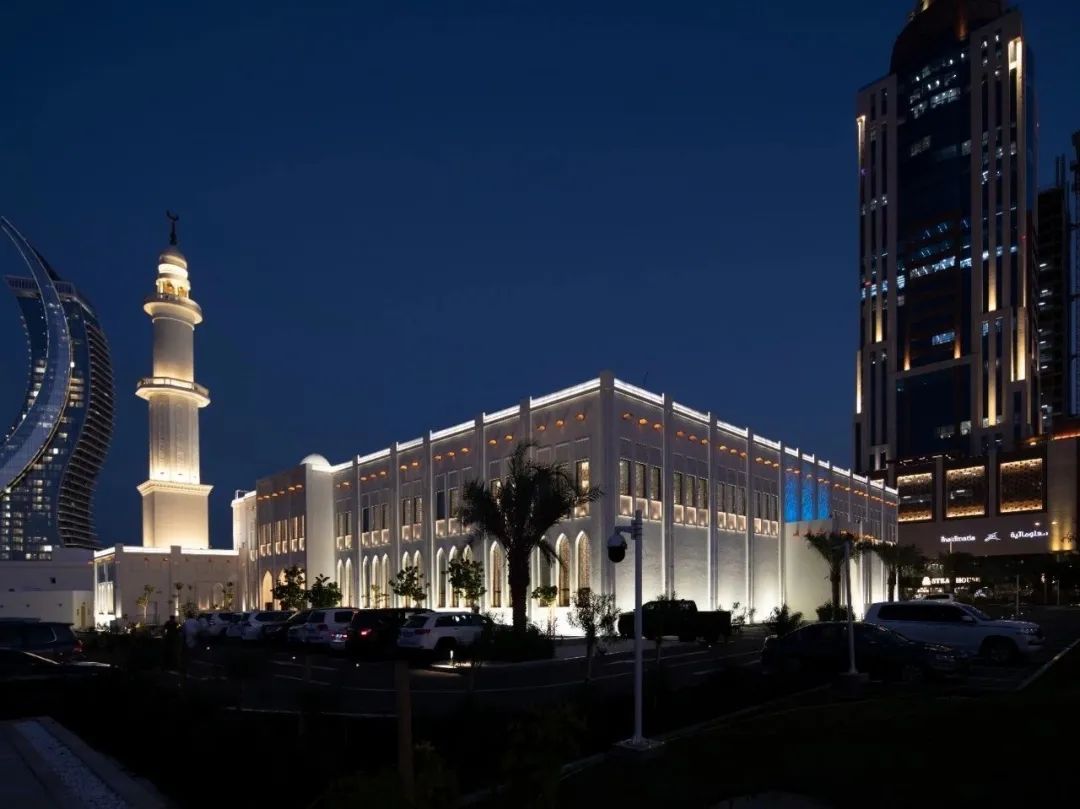The Art and Science of Outdoor Lighting: A Practical Guide to Facade, Park, and Bridge Illumination
When dusk falls over the city, light becomes the medium that connects function and aesthetics. Excellent outdoor lighting design is far more than simply lighting up the city - it activates the vitality of public spaces, strengthens the emotional expression of buildings, ensures the safety of citizens, and invisibly enhances the value of urban assets.
I. Introduction: Painting Cities with Light
As the sun sets, the city transforms—and outdoor lighting becomes the brush that sculpts its nighttime personality. Thoughtfully designed architectural lighting does more than illuminate; it enhances urban identity, increases safety, activates public spaces, and unlocks the true value of buildings, landscapes, and infrastructure.
However, selecting the right lighting solution for different urban elements—facades, parks, and bridges—is a complex challenge. Designers and engineers must navigate a matrix of functional, aesthetic, safety, regulatory, and maintenance considerations.
This article offers a comprehensive, practical guide to choosing the right outdoor lighting strategies for three of the most critical elements in urban nightscapes: building facades, public parks, and bridges.
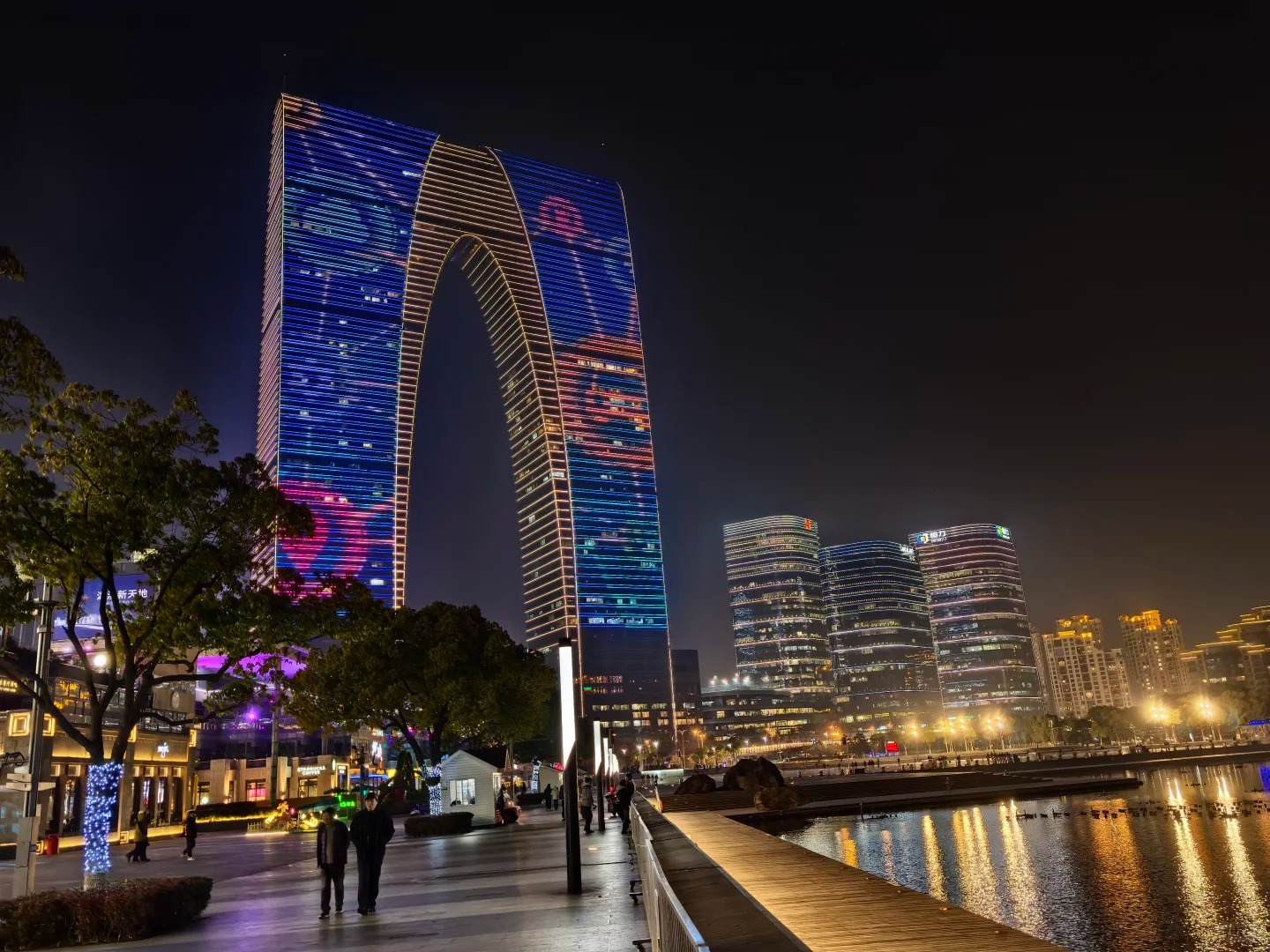
II. Foundation First: Core Principles of Outdoor Lighting
2.1) Define the Purpose of Lighting
Before any outdoor lighting design is carried out, the fundamental purpose of lighting must be clarified. Different scenes and structures often require different lighting strategies, and these strategies usually revolve around three core goals: functionality, aesthetics, and symbolism.
Functional lighting focuses on safety and guidance, such as providing clear, uniform, and glare-free lighting for pedestrian paths, stairs, roadways, or bridge decks to ensure the safety of night users. Aesthetic lighting emphasizes visual experience and uses lights to outline the building contours, render the park atmosphere, or emphasize the rhythm of the bridge structure to enhance the beauty and attractiveness of the space. Symbolic lighting is often used in landmark buildings or urban nodes. Its purpose is to establish emotional resonance through unique lighting language and convey cultural connotations or brand images.
A lighting project often does not serve only a single goal, but needs to strike a balance between functionality, safety, visual impact, and cultural expression. Therefore, before starting the design, a deep understanding of the site's usage needs, environmental characteristics, and user psychological expectations is the key first step to achieve high-quality outdoor lighting design.
2.2) Key Technical Concepts in Outdoor Lighting
2.2.1) Luminous Flux, Illuminance & Beam Angle: Understanding Light Quantity and Direction
In outdoor lighting, knowing how much light is emitted and how to project it is the basis for the success of the design. Luminous flux is measured in lumens (lm), which represents the total amount of light emitted by the lamp; while illuminance is measured in lux (lx), which refers to the light intensity received per unit area. Different places, such as building facades, park trails, or bridge decks, have significantly different requirements for illuminance, so it is necessary to determine the reasonable light quantity configuration through illuminance calculation and on-site simulation.
Beam Angle determines the distribution of light. Narrow angles (such as 10–30°) are suitable for spotlighting, which is used to highlight architectural details or sculptures; wide angles (above 60°) are suitable for floodlighting or large-area lighting, such as wall washing and square lighting. Reasonable selection of beam angles not only improves lighting efficiency but also effectively avoids excessive light diffusion and light pollution.
2.2.2) Color Temperature & CRI: Tuning the Atmosphere with Light Quality
Color temperature (CCT, Correlated Color Temperature) directly affects the visual atmosphere and emotional expression of the space. Different color temperature ranges can be selected according to different application requirements:
Warm white light (2700K–3000K): soft tones, creating a warm and relaxing atmosphere, suitable for parks, green spaces, classical buildings, or residential areas.
Neutral white light (3500K–4500K): natural balance, suitable for public squares, commercial facades or bridge pedestrian walkways.
Cool white light (above 5000K): bright and clear, conveying a sense of modernity and alertness, suitable for modern buildings or areas with high security requirements.
In addition to color temperature, Color Rendering Index (CRI, Color Rendering Index) is also an important indicator for evaluating the quality of light sources. The higher the CRI, the more the light source can truly restore the color of the illuminated object. It is recommended to use light sources with CRI ≥80 in outdoor lighting, especially when it comes to scenes with materials such as plants, sculptures, and building facades. High color rendering performance ensures the true presentation of details and texture.
2.2.3) Glare Control & Visual Comfort: Prioritizing Safety and Usability
Outdoor lighting design should not only be "bright", but also "comfortable to look at". Anti-glare design (Glare Control) is the core of ensuring visual safety and comfortable experience. Glare not only affects the beauty of buildings or landscapes, but may also endanger the safety of pedestrians or drivers' sight. In the design, lamps with shading hoods, shading sheets or built-in light control structures should be used first to reasonably control the beam angle and avoid direct exposure of the light source to the human eye. For environments such as residential areas, parks or bridges, anti-glare strategies should be strengthened to ensure that the lighting is both effective and soft.
2.3) Lighting Fixture Overview: Matching Form with Function
Choosing the right type of lamp is a key step to ensure that outdoor lighting projects achieve the expected visual effects and functional performance. Different lighting scenarios - such as facades, landscapes, parks or bridges - have clear technical requirements for the lighting distribution, structural form and installation method of lamps.
In facade lighting, commonly used lamps include linear lamps, wall washers, and floodlights. Linear lamps are suitable for outlining the outline of buildings and emphasizing linear elements; wall washers can evenly render large areas of walls to create a sense of hierarchy and architectural rhythm; floodlights are mostly used for key lighting, such as columns, decorative components, etc., to highlight the three-dimensional effect.
In outdoor lighting and architectural lighting projects, such as landscape trails, park lawns or bridge structures, a variety of lamps such as buried lamps, garden lamps, light strips, point light sources or floodlights are often used. Buried lamps have a high degree of integration with the ground and are suitable for low-level guidance and tree lighting; point light sources are suitable for composition lighting or grid control systems; floodlights are particularly common in large structures or areas with high brightness requirements.
In addition, the selection of lamps also needs to consider the installation environment (whether it is waterproof, dustproof, and corrosion-resistant), light distribution requirements (narrow beam or wide-angle light), control method (monochrome/dimming/DMX control) and maintenance convenience. High-quality lighting is not only about visual presentation, but also a comprehensive consideration of system efficiency, operating costs and sustainability.
2.4) Core Considerations That Span Every Outdoor Lighting Project
Whether it is a building facade, a public park or a bridge project, the following five considerations cannot be ignored throughout the design and implementation process. Together, they determine the feasibility, operating costs and long-term effects of the project.
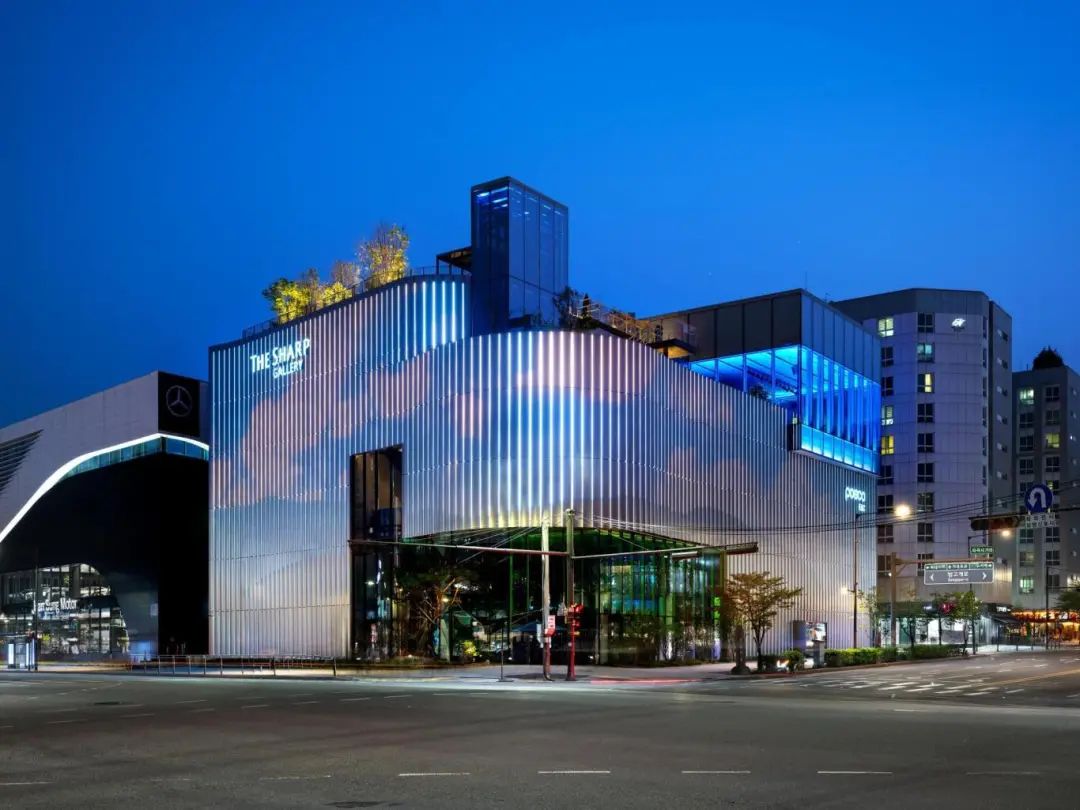
2.4.1) Energy efficiency and sustainability
In today's pursuit of low-carbon and energy-saving environment, LED light sources have become the first choice for outdoor lighting and architectural lighting. By choosing high luminous efficacy (lm/W), combined with intelligent dimming, timing control, or sensor switches, it can not only meet nighttime visual needs, but also significantly reduce energy consumption. For large urban landmarks or bridge projects, zoning control and scene presets should be designed to ensure that some lighting is automatically dimmed or turned off during off-peak hours to maximize energy savings and extend the life of the lamps.
2.4.2) Durability and protection level
The complexity of the outdoor environment - rain, dust, ultraviolet rays, temperature differences, and even seaside salt spray - places strict requirements on the IP (dust and water resistance) and IK (impact resistance) levels of lamps. For facade lighting, at least IP65 protection is required; while bridge or waterfront lamps should reach IP67/IP68 to resist water intrusion and long-term immersion. Materials and coatings must also be corrosion-resistant and weather-resistant to ensure long-term stable operation and avoid the maintenance burden caused by high-frequency replacement.
2.4.3) Maintenance convenience
Maintenance costs are often underestimated in the initial planning of the project. The selection of long-life light sources (such as LEDs with a life of more than 50,000 hours), modular design, and easily replaceable power supplies and accessories can greatly reduce the difficulty and risk of daily maintenance. For scenes that are difficult to reach at high altitudes such as bridges, priority should be given to central power collection or quick replacement modules rather than one-time high-power integrated lamps.
2.4.4) Regulations and standards
Local governments have clear regulations on light pollution, safe illumination, and energy conservation. Designers and contractors need to check local regulations on maximum illumination, overflow control, light source color temperature restrictions, etc. before planning outdoor lighting to avoid rework due to non-compliance during project acceptance. For municipal projects, it is usually necessary to pass special demonstrations for night scene lighting or environmental impact assessments.
2.4.5) Budget and life cycle costs
When determining the project budget, the initial procurement and installation costs and long-term operation and maintenance costs (electricity, replacement parts, and manpower) should be estimated at the same time. Although the unit price of high-quality lamps is higher than that of ordinary products, their comprehensive cost is often more advantageous when combined with energy-saving benefits and low-frequency maintenance. Clarifying the full life cycle cost helps customers make scientific and sustainable decisions, and it is also easier to obtain budget support from the municipal government or the client.
III. Facade Lighting Strategies: Shaping Identity Through Architectural Illumination
3.1) Revealing Architecture: The Principles of Facade Lighting
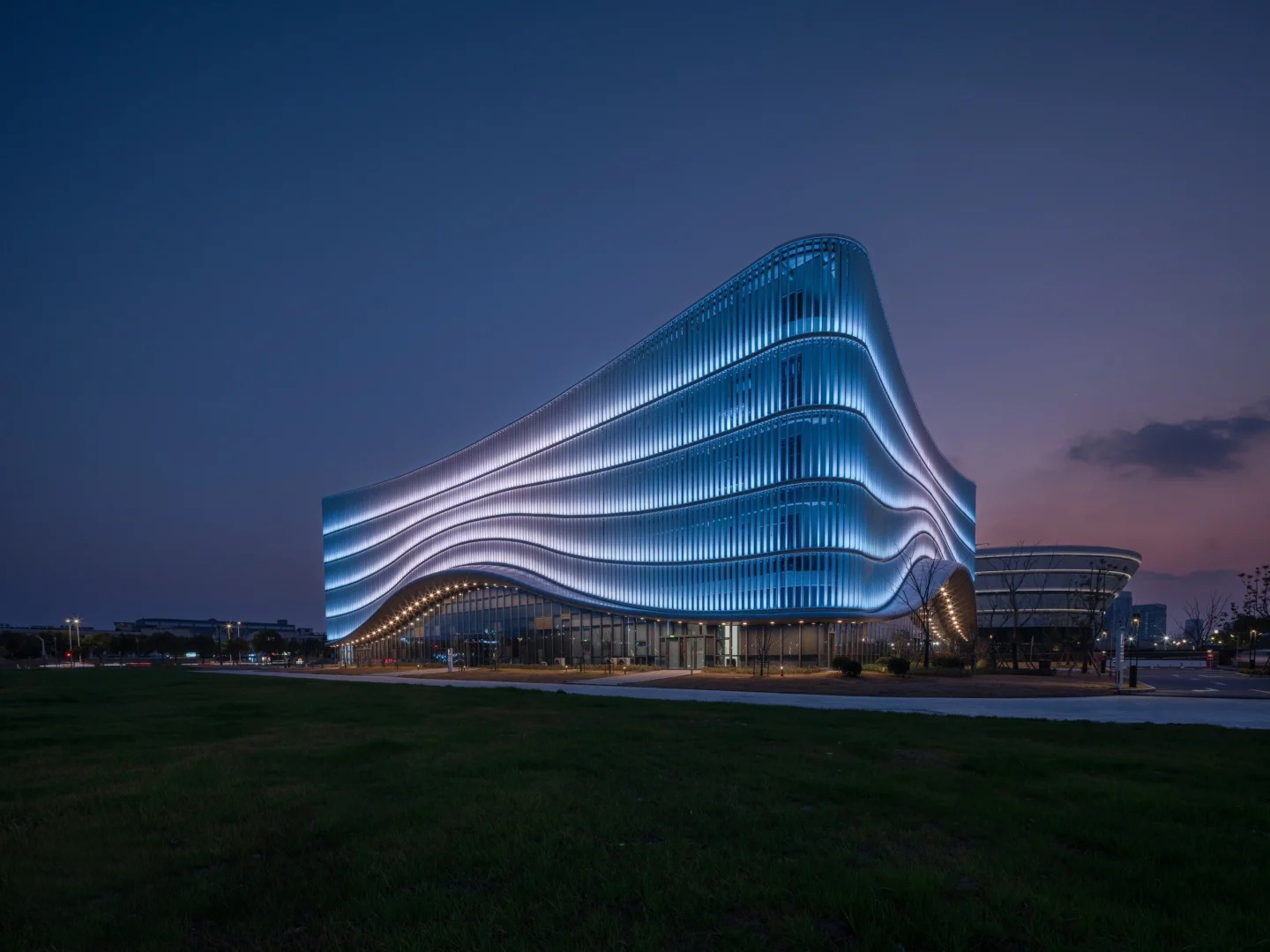
3.1.1) Respecting Architectural Identity
At its core, facade lighting is not about making a building visible at night—it’s about honoring and amplifying its architectural identity. This requires a deep understanding of the structure’s form, material, and cultural significance. A modernist glass curtain wall, for instance, may benefit from clean linear washes or grazing light that enhances reflection and transparency. In contrast, a historic stone facade often requires gentle uplighting to reveal its ornamental detail and layered texture, reinforcing its grandeur rather than overpowering it.
3.1.2) Creating Visual Hierarchy Through Light
Lighting design is as much about what not to light as it is about what to illuminate. The principle of light hierarchy dictates that focal points—columns, cornices, window rhythms—should be emphasized while less critical areas recede into shadow. Layering techniques—such as combining ambient glows with precision accent lighting—allow for a dynamic nighttime reading of the building. This selective approach prevents over-illumination, preserves contrast, and brings depth to the facade.
3.1.3) Seamless Integration for Day and Night Harmony
Well-executed architectural lighting blends invisibly into the building envelope. In heritage buildings, designers often face the challenge of integrating modern lighting without compromising historical integrity. Custom brackets, hidden conduits, or ground-based optics can provide lighting solutions that are sympathetic to preservation goals. For new builds, early collaboration with architects can yield recessed channels, integrated coves, or material coordination that allow luminaires to disappear by day and perform flawlessly by night. Integration isn't merely aesthetic—it's essential to long-term performance, maintenance, and civic acceptance.
3.2) Lighting Techniques for Different Facade Types
3.2.1) Glass Facades: Transparency and Reflection Control
Glass buildings, iconic in contemporary urban skylines, require a nuanced lighting approach to avoid glare and maximize their reflective potential. Instead of directly lighting the glass, designers often use indirect grazing techniques—washing nearby surfaces such as mullions, fins, or structural framing. This creates visual articulation without introducing mirror-like hotspots. Linear LED strips embedded at floor or ceiling junctions can softly frame the glazing, while backlighting behind frosted panels or embedded textures can turn curtain walls into glowing volumes. Color temperatures must be carefully selected to prevent color distortion through tinting.
3.2.2) Metal Facades: Precision and Edge Highlighting
Metal panels offer opportunities for sharp-edged illumination and controlled reflection. Designers often use narrow-beam wall grazers to define seams or creases, emphasizing folded geometries or perforated textures. In high-end commercial or civic projects, integrated edge lighting along architectural reveals can accentuate structure without overpowering its minimalism. Since metal tends to reflect surrounding light sources, careful luminaire placement is essential to avoid unintentional glare or shadow wash. Cooler white light (4000K–5000K) is commonly used to maintain the material’s crispness.
3.2.3) Stone Facades: Depth and Shadow Play
Natural stone, often used in historical or monumental buildings, responds best to soft uplighting or narrow-beam spotlights that reveal its texture and relief. By emphasizing cornices, arches, and pilasters, lighting designers can bring the richness of the material to life. Stone surfaces absorb light rather than reflect it, allowing more aggressive beam angles and higher contrast ratios. Color temperatures in the warm white range (2700K–3500K) help preserve the building’s heritage feel and ensure material warmth is conveyed authentically.
3.2.4) Concrete Facades: Balancing Brutality with Warmth
Concrete surfaces—especially in brutalist or minimalist designs—offer a canvas for dramatic shadow sculpting. Designers may opt for grazing light from below, creating verticality and enhancing form. Alternatively, cut-off floodlights with asymmetric lenses can shape mass and rhythm across large surfaces. Too much flat lighting flattens its character; directional lighting, by contrast, reveals board-formed textures, reliefs, or joints. Warm neutral tones (3000K–3500K) are often preferred to soften concrete’s inherent coldness and provide a more welcoming ambiance.
3.2.5) Brick and Terracotta: Texture and Rhythm
Brick facades thrive on rhythmic repetition and detail, making them ideal candidates for narrow-beam uplighting that tracks pilasters or recessed bays. Designers may also incorporate grazing techniques across brick patterns to bring out tactile character, especially in civic or cultural buildings. Since brick tends to absorb and diffuse light, moderate-intensity fixtures at close range often yield better results than wide floodlights. A warm white temperature (2700K–3000K) helps complement the natural tones of red or earth-colored bricks.
3.3) Dynamic Lighting: Movement, Rhythm, and Interactivity
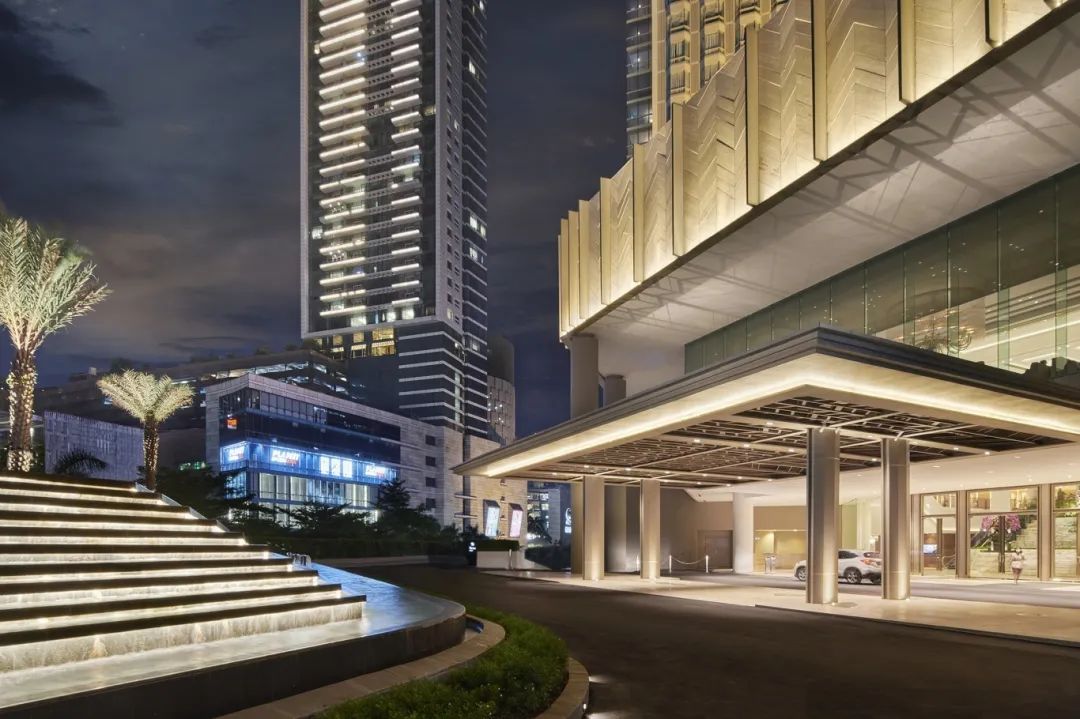
As architectural lighting gradually moves towards digitalization and intelligence, dynamic lighting technology is changing from a visual effect to an important means of expressing architectural emotions, enhancing spatial emotions and public interaction. Compared with static lighting, dynamic lighting can change in real time according to festivals, seasons, activities and other situations, giving the facade "life" and better connecting people and the city.
3.3.1) Motion-Based Lighting: Building as a Moving Canvas
Through program-controlled lighting sequences, the building facade can present a breathing rhythm, flowing patterns, and even change synchronously with the surrounding environment. For example, commercial buildings can use point-by-point color-changing LED pixels to create programmable video facades (media façades) to dynamically display brand information, holiday themes or urban culture. This type of lighting not only improves the night recognition of buildings, but also gives buildings immersive visual narrative capabilities.
3.3.2) Rhythmic Illumination: Synchronization with Architecture
Dynamic lighting does not mean chaos or noise. In many high-end projects, designers will match the rhythm of lighting with the rhythm of architectural structure - such as column grids, window openings, structural units, etc. - to enhance the architectural language with gradient, cyclic, and breathing light effects. This kind of rhythmic dynamic light effect is suitable for scenes such as urban landmarks, cultural buildings, and the periphery of public squares, giving viewers a visual perception of "buildings breathing".
3.3.3) Interactive Lighting: Engaging People and Environment
Interactive lighting is an advanced stage of dynamic lighting. It is not only "dynamic" but also "perceptive". Through sensors, cameras, and even social media data collection, building facades can respond to traffic, sound, weather, user behavior, etc. For example, in bridge or landscape lighting projects, when people pass through a certain area, the lights can be lit up along the trajectory of the movement to enhance public participation. Other intelligent lighting systems can also automatically adjust the brightness and color temperature according to the real-time weather to balance visual comfort and energy efficiency.
IV. Park Lighting: Creating Safe and Inviting Urban Oases
4.1) Lighting Objectives
In the design of park lighting, the primary goal is to ensure the safety and comfort of night users. To this end, it is necessary to arrange uniform, glare-free light sources in the main passages and node areas to ensure that pedestrians and cyclists can easily identify the path boundaries, steps and obstacles; at the same time, by adjusting the height of the lamps and the angle of the beam, the light is focused on the direction of travel to avoid unnecessary spillover, and a clear visual guide is established for the main and secondary passages in the park.
In addition to basic safety needs, lighting should also assume the function of space shaping. In "node" locations such as squares, rest platforms or children's play areas, a layered light environment can be used - such as the soft bottom light created by ground recessed lights combined with key beams under trees or next to sculptures - to highlight the center of the place and provide visitors with a natural gathering and stay space. Through contrast and transition, the brightness of the main path, secondary trails and forest wild areas is different, guiding the flow of people and enriching the sense of hierarchy of the landscape at night.
Finally, excellent park lighting also needs to take into account the two dimensions of ecology and atmosphere. On the one hand, warm or amber light sources (about 2700K or less) should be used in areas close to wetlands, water bodies or animal habitats, and full-shading lamps should be used to strictly control light pollution and up and down spills to reduce interference with nocturnal animals; on the other hand, low-brightness, wide-beam diffuse lamps should be used in areas where people rest or walk to create a soft and quiet atmosphere so that visitors can still feel warm and relaxed at night. By finding a balance between safety, space shaping and ecological protection, park lighting can truly become an "oasis" for urban nightlife, combining functionality and poetry.
4.2) Strategies and Techniques
In the specific implementation of park lighting, designers need to combine landscape characteristics and usage scenarios, and flexibly use a variety of lighting methods to achieve an organic integration of function, safety and landscape atmosphere.
4.2.1) Main trails and node lighting
The main trails usually serve as the main flow lines of people in the park. Therefore, it is recommended to use fully shielded low-glare lamps, such as ground-mounted lamps or low-column lamps, which are evenly arranged along the center line of the road or on both sides to ensure that the road surface obtains a uniform illumination of 5-10lx, and through the combined control of beam angle and lamp pole height, avoid light spilling over to surrounding vegetation or residential areas. For node spaces such as squares and rest platforms, floodlights or under-tree lights can be superimposed on the bottom light of the path to form a secondary level of "bottom light-key light", making the space more visually focused and creating a comfortable three-dimensional atmosphere.
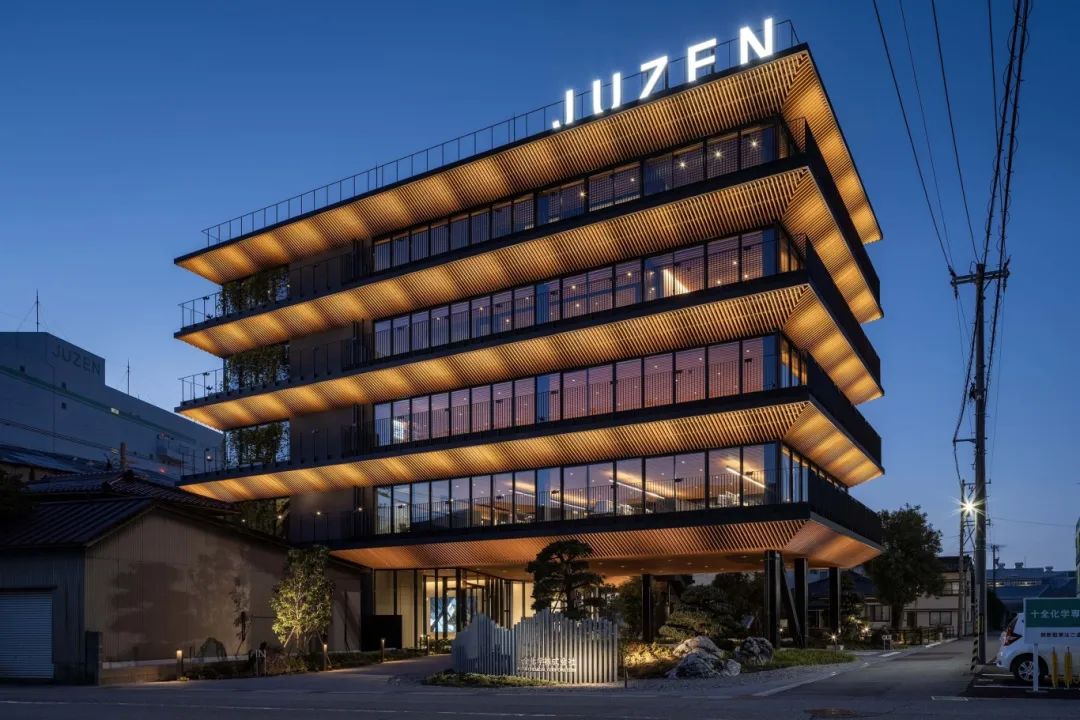
4.2.2) Landscape and Sculpture Lighting
For landscape points such as trees, small pieces or sculptures in the park, the combination of upward and downward projection can not only show the shape and texture, but also enrich the light and shadow effects at night. For upward projection, you can choose low-power buried lamps or downlights with narrow beam angles (<30°) to highlight the crown or sculpture details; downward "moonlight-like" lamps are installed between branches to create naturally scattered light spots, and with soft light covers to reduce shadow contrast, so that the ground and lower vegetation can obtain uniform and soft lighting.
4.2.3) Waterscape and ambient lighting
Water bodies are one of the most attractive elements in the night view of parks. Hiding IP68 waterproof lamps at the bottom of fountain pools or embedded linear wall washers along the coastline can use the refraction and flow effects of the water surface to create flickering light and shadows and color gradients. For the harmony of the overall atmosphere, diffuse buried lamps are set under green slopes, flower beds or benches to provide soft ambient bottom light, which can illuminate low plants without interfering with the visual comfort of resting people.
4.2.4) Safety and energy efficiency control
In order to balance safety needs and energy-saving goals, it is recommended to install lamps with motion sensing or light sensing functions in key areas such as park entrances, toilets, bridges, etc., which will automatically adjust to low brightness when there are few people, and instantly restore to high brightness when people come. At the same time, the park lighting system should be included in the centralized control platform to achieve regional hierarchical timing, holiday mode and emergency response plan for emergencies, so as to ensure public safety at night and minimize power consumption and lamp wear.
4.3) Key considerations
In the long-term operation of park lighting, several core factors must be considered comprehensively to ensure that the lighting system can meet functional requirements, be low-carbon, environmentally friendly and easy to maintain.
First, zone dimming and time management are the basis of energy saving and safety: brightness levels should be established for main trails, secondary trails and nodes, and automatically switch to full brightness, half brightness or night safety mode in combination with sunset time and late night traffic, which can not only ensure the safety of visitors but also minimize energy waste.
Second, light pollution and spill control are crucial: all lamps should adopt full shading design, strictly limit the beam spill angle, and avoid unnecessary upward shooting and spill through careful lamp positioning and beam adjustment, so as to protect the natural night sky environment of surrounding residents and nocturnal creatures.
Third, ecological sensitivity must be synchronized with color temperature control: in lighting near wetlands, bird habitats or densely vegetated areas, warm light sources with longer wavelengths (2000K–2700K) or amber LEDs should be used first to reduce interference with the circadian rhythm of animals; in activity areas with concentrated traffic, neutral white of around 3500K can be used to balance color presentation and comfortable atmosphere.
Finally, durability and maintenance convenience are also key to ensuring the long-term reliability of the system: choose protective lamps with at least IP65 and IK08 levels, combined with modular design and quick-plug power/drive components for regular cleaning, maintenance or replacement.
At the same time, equipped with remote monitoring and fault alarm functions, the maintenance team can obtain equipment status information in the first time, arrange maintenance in advance, and avoid lighting interruptions and safety hazards. Through the coordinated deployment of these four major considerations, park lighting can truly achieve the design goals of "beautiful, safe, environmentally friendly, and sustainable".
V. Bridge lighting: a balance between functionality and landmark
Bridge lighting not only has to meet the functional requirements of traffic safety, but also shoulders the responsibility of shaping the city skyline and riverbank image. Good bridge lighting should not only "let passers-by see clearly", but also "let the city shine".
5.1) Lighting Objectives
The primary goal of nighttime bridge lighting is to ensure the safety and comfort of pedestrians and vehicles during passage. To this end, an average illumination of 20–30 lx is required on the bridge deck and sidewalks, and glare-free or low-glare road projection lamps are used to ensure that key details such as road edges, expansion joints and drains are clearly visible; at the same time, the supplementary lighting of handrails and stepping lights can reduce the blind spots of height difference perception and further reduce the risk of accidents.
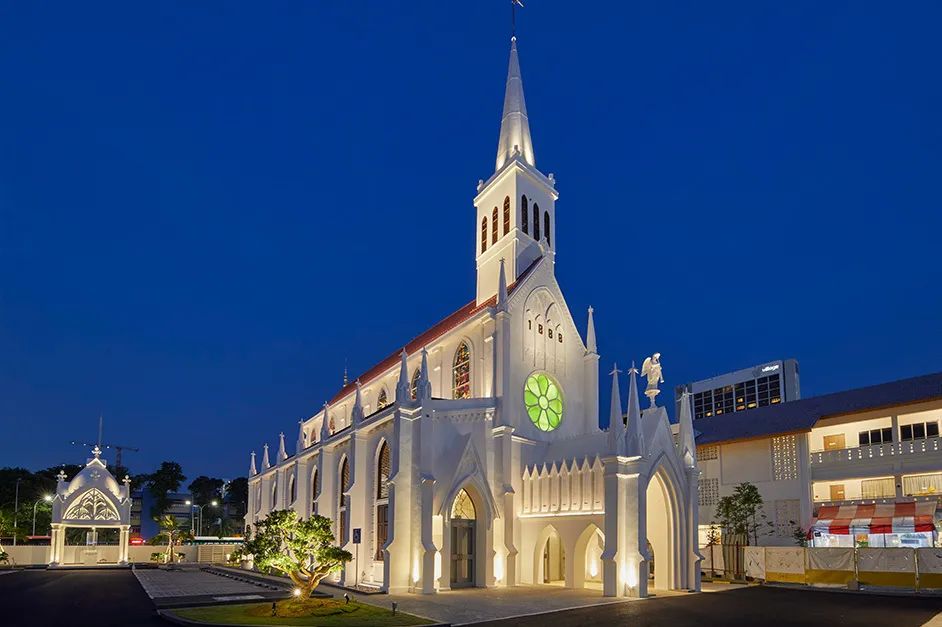
On the basis of meeting the safety function, bridge lighting should also shape the beauty of the structure and highlight the outline and support details of the bridge. By arranging linear light strips or hidden projection devices on the main beams, arches or cables, the overall shape of the bridge can be outlined; by applying key floodlights on the vertical surfaces of piers and bridge towers, the interweaving of light and shadow is used to strengthen the structural texture, so that the bridge has both sculptural texture and dynamic tension in the night.
Finally, bridge lighting carries the function of shaping the city's night scene landmark. On weekdays, neutral white (about 4000K) should be used as the base tone to show the inherent architectural language of the bridge; during major festivals or events, the DMX-controlled color dynamic scheme can be enabled to turn the bridge into a "breathing" iconic device in the city. Through preset theme colors and motion effect sequences, it can resonate with citizens and give the bridge more culture and ritual sense.
5.2) Strategies and Techniques
In order to achieve the dual goals of function and beauty on the bridge, designers need to use a variety of lighting methods in combination, from macro outlines to detailed nodes, layer by layer, and complement each other.
5.2.1) Structural outline lighting: emphasizing lines and volume
Installing high-efficiency linear LED light strips or hidden projectors along the main beams, arch rings, cables or towers of the bridge can smoothly outline the outline of the bridge body, forming a "light silhouette" between the night sky and the water surface. In order to ensure that the overall shape is not destroyed during the day, the lamps should be hidden in dark grooves, bridge eaves or bridge deck gaps, with only tiny light outlets exposed; when the light is on at night, the structural form and architectural language can be fully presented. Considering the complex shape of the cable bridge, slender lamps can be arranged at equal distances on both sides of the cable, which not only highlights the elegant curves of the cable, but also projects gorgeous reflections on the water surface.
5.2.2) Bridge deck and sidewalk lighting: safety and art
The core of bridge deck and sidewalk lighting is "no glare and high uniformity". It is recommended to use curb-mounted or buried spotlights with asymmetric optical lenses to accurately project light in the direction of travel, providing an appropriate illumination of 20–30lx without glaring reflections. The built-in linear light source of the railing not only provides soft directional lighting for pedestrians, but also leaves a light and dark contrast between the light strips, enhancing the rhythm of night walking. For areas with smooth or slippery bridge deck materials, a slightly textured or non-slip surface can be set under the lamp to ensure night vision and gait safety.
5.2.3) Underbridge and pier lighting: Sculptural bridge body and water surface interaction
The space under the bridge is often overlooked, but it is the key to the extension of the bridge's three-dimensional sense and night view. Selecting IP67 and above narrow-beam spotlights, focusing upward on the vertical surface of the pier, can enhance the thickness and texture of the supporting structure; at the same time, through the interaction of low-angle light with the water surface, a halo or "halo" effect is formed at the arch foot, which sets off the beauty of the reflection on the quiet river surface. To facilitate maintenance and replacement, the layout of lighting fixtures should take into account the accessibility of barge operations or quayside platforms, and adopt quick-disassembly brackets.
5.2.4) Dynamic effects and environmental response: giving bridges "life"
By integrating controllable pixels (DMX/RDM) in key nodes and light strips, bridges can achieve colorful changes for festivals, urban events or public art projects. Designers can preset multiple dynamic modes such as "ripples", "snake streamers" or "breathing flashes". When large-scale events such as urban music festivals and marathons are held, one-click switching can create a theme atmosphere; on weekdays, it can be set to a slow-breathing soft light mode to ensure that the night view of the bridge is not too noisy. Combined with the environmental monitoring system, the color temperature and brightness of the light can also respond to changes in weather, wind speed or water level in real time: automatically lower the color temperature in foggy weather to increase penetration; switch to stable and gentle dynamic effects when the wind and waves are strong to ensure overall visual harmony and safety.
5.3) Key considerations
After the bridge lighting scheme is determined, the following factors will determine the long-term reliability and stability of the system:
5.3.1) Durability and environmental adaptability
Bridge lamps are exposed to harsh environments such as wind, rain, ultraviolet rays, sea breeze or snow melting salt spray all year round. Therefore, IP67–IP68 waterproof and dustproof and IK10+ impact-resistant lamps should be preferred; the housing material should be 316L stainless steel or high-temperature cured powder coating to resist corrosion and fading. The cable interface and junction box also need to be sealed, and three-level sealing rings and waterproof sealants are used to ensure long-term leakage.
5.3.2) Glare control and driver vision protection
For bridges carrying motor vehicle traffic, glare control is particularly important. Luminaires must meet the UGR (unified glare rating) limits of the IES RP‑8 or CIE 115 standards. Projectors with visors and asymmetric optical lenses are preferred to accurately direct light to the road surface to avoid lateral or upward beams that interfere with the driver's vision. For pedestrian areas, handrail lamps and step lamps with adjustable shading can be selected to take into account both directivity and comfort.
5.3.3) Anti-vibration and stable installation
The bridge generates continuous vibration due to traffic and wind loads, so the lighting components need to have an anti-vibration design. It is recommended to use a mounting bracket with an elastic shock-absorbing washer, and use a locking nut and a locking gasket inside the lamp body to prevent loosening or breakage caused by long-term vibration. In addition, the fixed structure of the lamp and the control box should take into account the displacement of the deformation joint due to thermal expansion and contraction of the bridge deck, and reserve sufficient expansion space.
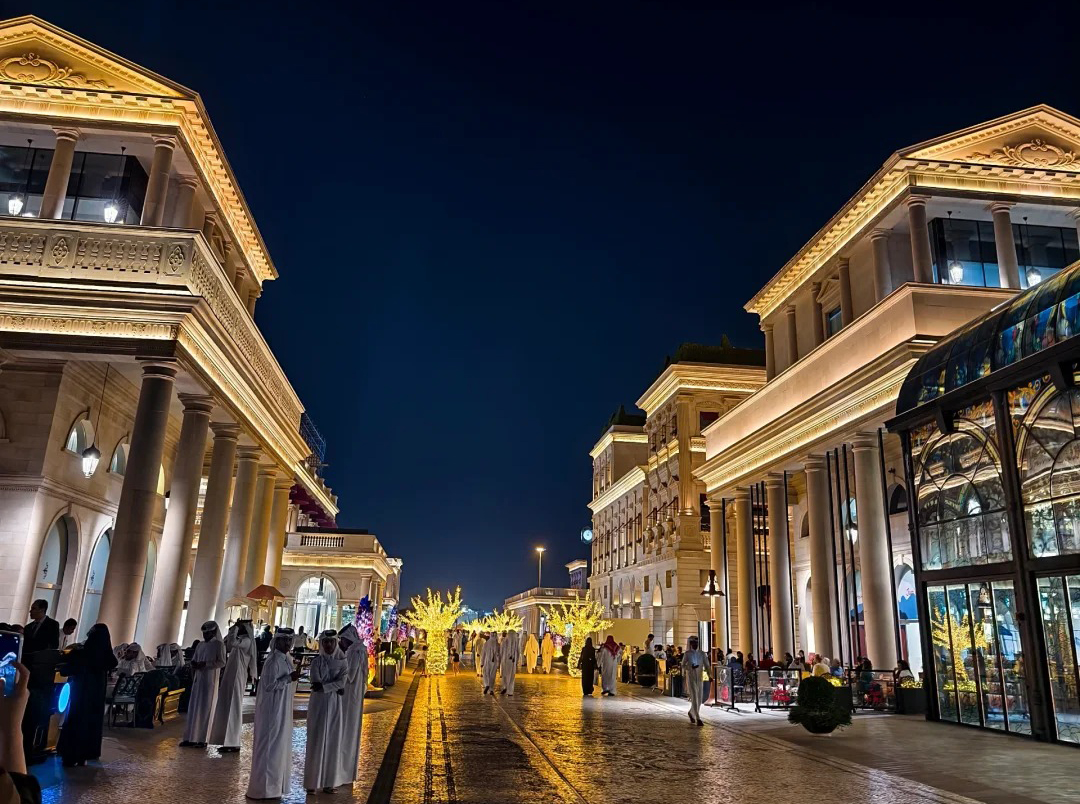
5.3.4) Convenient maintenance and remote monitoring
The maintenance of bridge lamps usually involves high-altitude operations or water platforms, and the maintenance cost and risk are very high. In order to reduce the pressure of later operation and maintenance, the system should adopt a modular design: the light source, driver, and controller are separated and can be quickly replaced; the cable connector uses a quick-plug connector for easy disassembly and assembly. More importantly, the remote monitoring function is integrated to realize the real-time upload of lamp power, temperature, and fault status. When deviations or fault alarms occur, the maintenance team can dispatch in advance to avoid long-term light outages.
5.3.5) Control redundancy and emergency plan
In order to ensure that key traffic functions are not affected by control system failures, the main street lights and safety lighting circuits of the bridge lighting should be powered by dual power supplies and dual controls. In the default mode, the central control system can manage the lighting scenes of the entire bridge; in the event of communication or power failure, the system automatically switches to the local emergency mode, with a neutral white fixed light color of 50% brightness to ensure night traffic safety. In addition, an emergency manual switch button should be reserved for nighttime activities or festival lighting on the bridge to ensure that on-site personnel can quickly restore or turn off the lights when the network is abnormal.
5.4) Maintenance planning and life management
Once the bridge lighting system is put into operation, its long-term reliability and cost-effectiveness depend largely on scientific maintenance planning.
First, a regular inspection and cleaning plan should be formulated: for underground lights and curb lights on bridge decks and sidewalks, the shell and optical components should be cleaned every six months to remove salt spray, dust and seaweed attachment to ensure light transmittance; for structural contours and pier floodlights, a complete protection level test should be conducted once a year to check whether the seal ring and shell are aging or loose.
Second, implement modular spare parts and quick replacement strategies: lamps, drive power supplies, and control units all use quick-release connectors and standardized modules. Once a failure occurs, they can be quickly replaced on a barge or quay crane platform, reducing traffic control time and maintenance risks.
Third, relying on the remote monitoring and early warning system to collect the power, current, temperature and communication status of lamps in real time, the operation and maintenance platform can predict potential faults based on the data curve and dispatch repair orders in advance; special emergency drills should also be arranged at key nodes and high-risk seasons (such as before and after winter and typhoon season) to ensure that the maintenance team is proficient in high-altitude or water surface operation processes, emergency power outages and scene recovery plans. Through the above multi-level maintenance and life management, bridge lighting can shine for a long time in the years and storms, taking into account safety, energy saving, and landscape value.
Conclusion: Urban Lighting as an Intersection of Vision and Precision
Choosing the right lighting for facades, parks, and bridges is an art—and a science. It involves harmonizing creative vision with technical understanding, functional needs, and environmental responsibility.
By starting with clear goals, understanding the unique context of each element, following core design principles, and seeking expert guidance, lighting professionals can craft urban environments that shine beautifully, efficiently, and sustainably.
Let your lighting designs become part of the city's identity, safety, and soul—one beam at a time.





